Losing your subscribers is a tough thing. It strikes you hard. The email of a prospect is valuable to your business.
In this article, you’ll learn how to reduce your email unsubscribe rates.
But before I reveal the 13 incredible ways to reduce unsubscribers, let’s talk about what a good subscribe rate is.
Constant Contact is an online marketing company that sells email marketing software.
The company gathered and examined data from over 200 million emails sent by their customers, who have recorded their business type.
Constant Contact found that the average unsubscribe email rate is 0.01% across all industries.
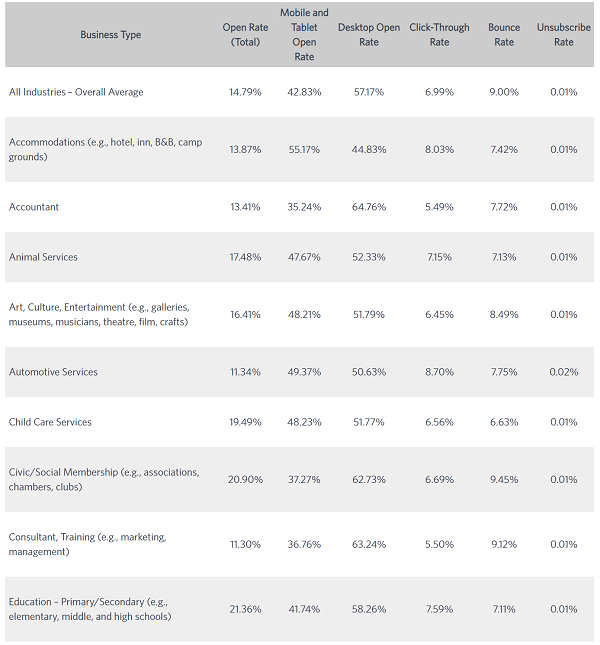
MailChimp, another popular email marketing software released data collected from its customers’ accounts. They found that the average unsubscribe rate for most industries was 0.23%.
After combining data from both Constant Contact and MailChimp, I found that few industries have an average 0.03% unsubscribe rate.
So, anything below 0.05% is good. And anything above that needs some improvements.
If your email marketing campaigns’ average unsubscribe rate is above 0.05%, this article will show you ways to reduce it.
13 Effective Ways to Immediately Decrease Your Email Unsubscribe Rate
It’s time to get into the meat and potatoes of this article.
Note that you don’t need to apply all these tips at once. Implement 1 – 2 per week and see how it helps your email campaigns.
Applying everything at once would be overwhelming, and it would be hard to know which of these ways have the most positive impact on your revenue.
1. Test single opt-ins and double opt-in
What do double opt-in and single opt-in mean, and what’s the difference?
A single opt-in means the only thing a visitor needs to do is submit their email address.
After signing up, the new subscriber may receive an email message that looks like this.
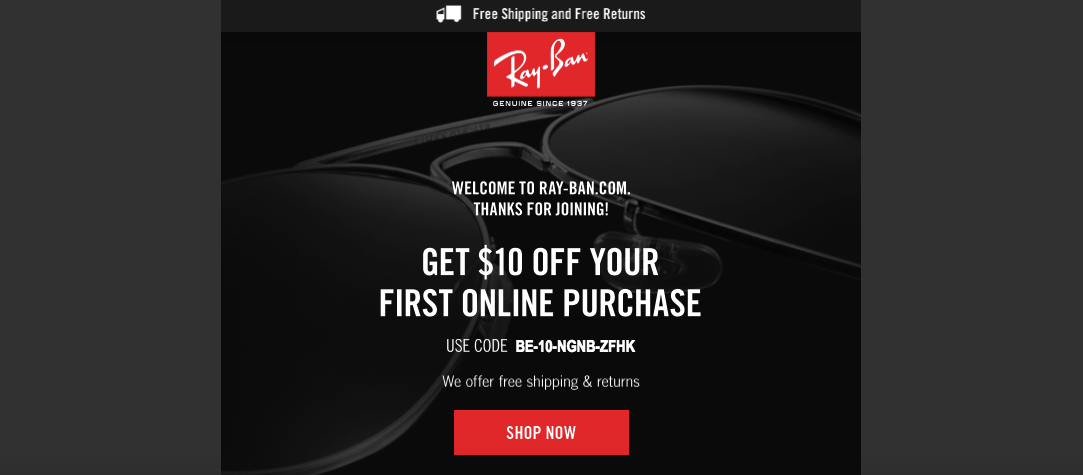
As you can see, there’s no action required to confirm the subscription. The marketer offered the subscriber free shipping and discount. The marketer is already selling.
A double opt-in means that a visitor who has submitted their email would have to confirm it further. They do that by going to their email and opening a message that contains a link to confirm the subscription.
For example, PUMA uses double opt-in on its site. The below is an email message a shopper receives after subscribing to PUMA.
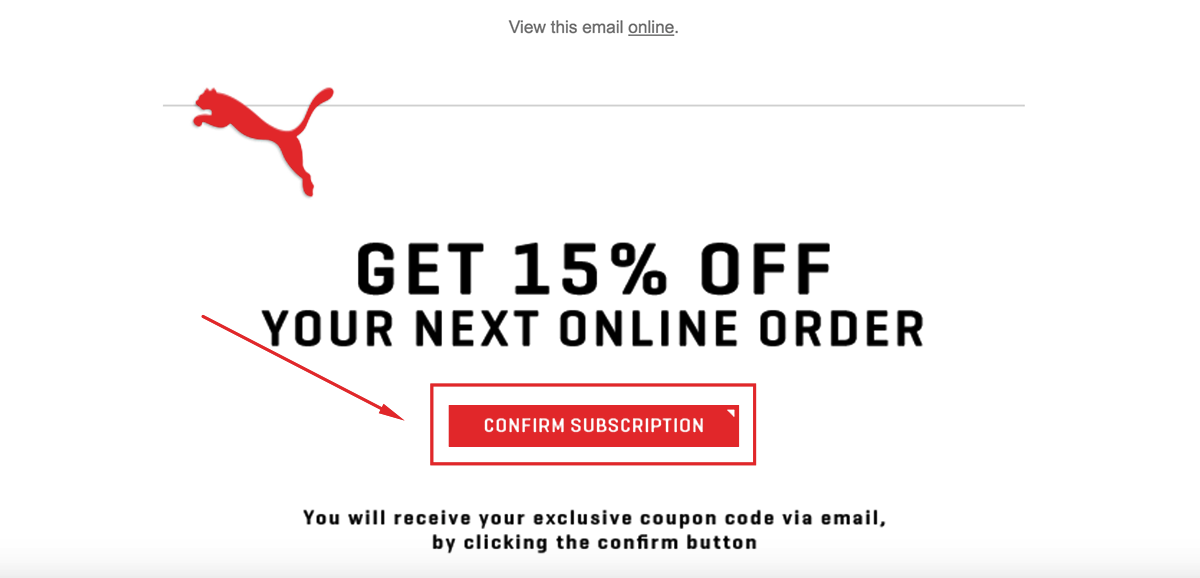
The user must confirm its subscription to continue receiving emails from PUMA. As you can see, PUMA offers a 15% discount to make the new subscriber act.
Single opt-ins let you build your email list faster as they are less actions a visitor must take to subscribe. However, this approach doesn’t respect user’s privacy, and your list could have lots of fake emails.
Recently, a visitor used my own email address to sign up for my email list. I started receiving my own email campaigns. I’ve also seen non-existent emails from my own domains being used to sign up.
Double opt-ins will give you quality email list because each subscriber is required to confirm they own the address they used to sign up.
The disadvantage of this approach is that building your email list is slow. Visitors must confirm their email before they can be added to your list. So, some never complete the sign-up process.
How do you decide which one to achieve a better email unsubscribe rate?
Test. What works for some companies may not work for yours. Your customers are different.
A single opt-in approach may work better for your business than double opt-in, and vice versa. So, test!
2. Segment your email subscribers
Email list segmentation means splitting your subscribers based on some conditions. It helps you send highly targeted emails that resonate with prospects.
When subscribers feel that your messages are for them, they are unlikely to unsubscribe from your list.
According to data from MailChimp, segmented email campaigns had 14.31% higher open rates, 100.95% higher clicks, and 9.37% lower unsubscribe rates than non-segmented campaigns.
Segmented campaigns performed better than non-segmented campaigns in every aspect.
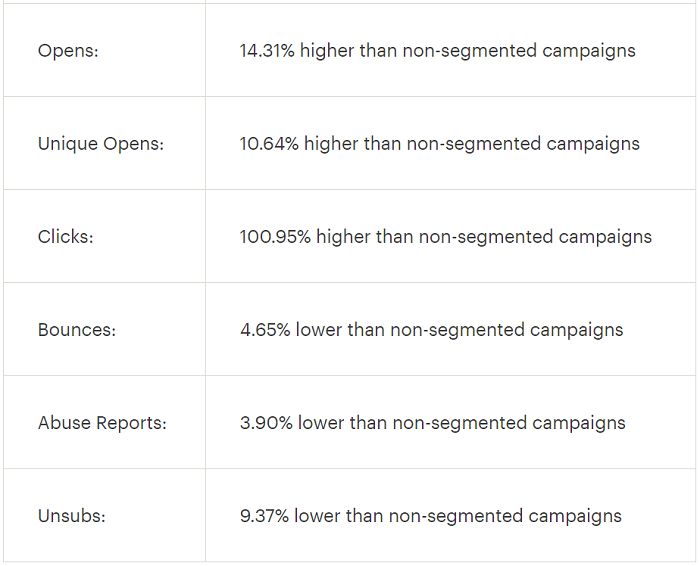
There are different ways to segment your email subscribers.
Here are some of my favorites:
- New subscribers: They shouldn’t get the same messages your old subscribers receive. Send them new messages and campaigns that are tailored for new subscribers.
- Preferences: Ask subscribers what kind of messages they want to receive from you via email. Discounts, post updates, important updates? Send them what they ask for.
- Location: Use the subscriber’s location to send them targeted emails.
- Open rate: People who open your emails regularly are valuable to your campaigns. They shouldn’t be treated the same way as people who open your emails occasionally. Reward active subscribers.
- Lead magnet: Subscribers should receive emails that are related to the lead magnet they opted-in for.
- Purchase history: Use your subscribers’ purchase history with your business to offer them targeted up-sells or cross-sells.
- Amount of purchase: There are lots of ways you can use this information. You may give special treatment to customers who purchase large amounts of products or services. Free gifts and thank you letters are excellent ways to show appreciation.
- Birthday: Subscribers’ birthdays are important days of their lives. They’ll value you more if you recognize and celebrate their birthdays with them.
3. Create a high-quality content your subscribers won’t want to miss
Web users want content they receive in their emails to be unique, high-quality, and amazing. They don’t expect to see it elsewhere on the web. If they can find it elsewhere, then why should they keep receiving your emails?
The messages you send to your email subscribers should be so unexpected that it makes them talk about it on social media.
The content you send should make subscribers hit the “reply” link to comment on the email. That’s how you develop strong relationships with your subscribers.
4. Write subject lines that entice subscribers
The subject line is the most crucial part of all email campaigns.
The subject line is the first thing subscribers see before deciding whether to open your email message or not.
Your subject line should contain 3 – 5 words, and 14 – 24 characters. It should get subscribers to open the message.
Most people read their emails on mobile. And mobile devices don’t have big screens to contain long subject lines.
According to a study, 75% of Americans use their smartphones most often to check email.
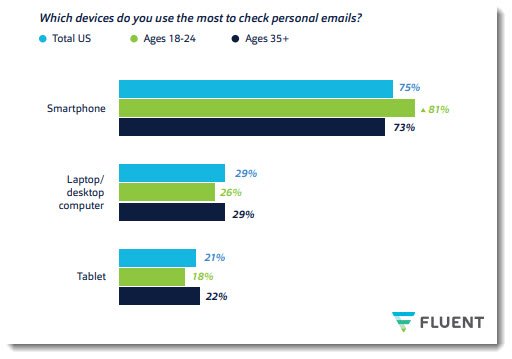
You need to get subscribers’ attention. When you have their attention with your brilliant and short subject lines, they won’t want to unsubscribe.
5. Personalize your email campaigns
Half of consumers say they’re likely to switch brands if a company doesn’t personalize messages to them.
Personalize beyond their first names.
Send an image that matches the subscriber’s location. Campaign Monitor did this, and they increased their email click-through rate by 29%.
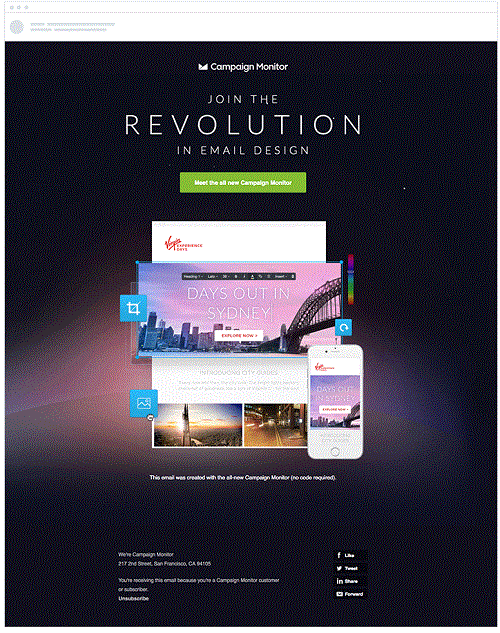
An email that wishes a subscriber happy birthday is a personalized message.
Personalization shouldn’t be limited to customers. Personalize the brand too.
Subscribers should feel they are receiving an email message from an individual instead of a brand. HubSpot and Buffer do this.

6. Get your email frequency right
If you send emails occasionally, you risk being forgotten. And if you send emails too often, you risk annoying your subscribers.
Here’s what I recommend:
First, set expectations when your subscribers sign up. Tell them how often they should expect to receive email messages from you.
Now, should you send emails daily, weekly, bi-weekly, or monthly?
I wouldn’t say send emails daily. It’s very easy to annoy subscribers if you send emails daily. Deleting your email messages would become almost a routine for them. And the worst part? They might even flag your emails as spam.
Sending every week is cool. But make sure your readers know the day of the week to expect your emails.
Bi-weekly? I wouldn’t recommend that. Two weeks is a long time not to send something interesting to your subscribers.
Monthly? Don’t even think about it.
According to stats by GetResponse, sending emails once or twice per week have the highest open and click-through rates.
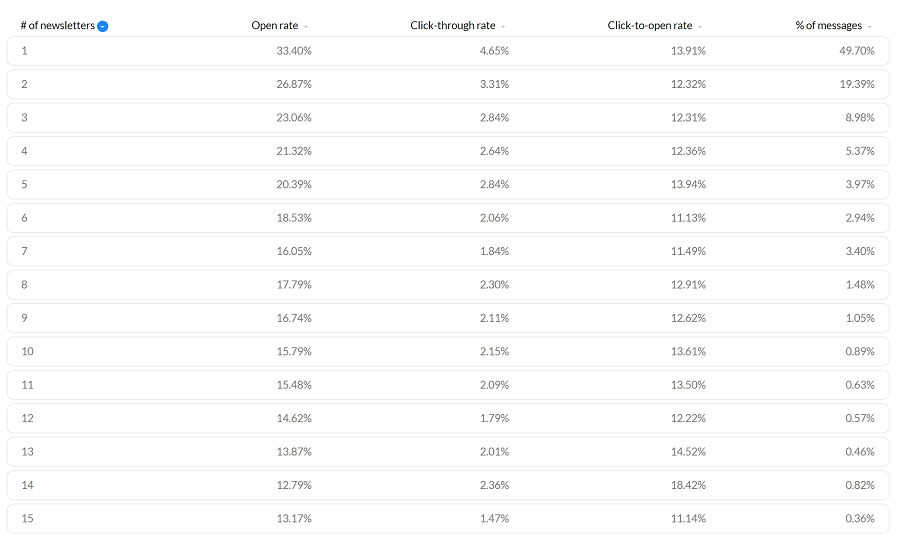
If you send high-quality content twice a week or once a week, there won’t be a reason for a subscriber to leave your email list.
7. Optimize your email message for mobile
Even though I use my desktop a lot for work, I still check emails on my smartphone. I receive new email notifications on my phone.
Your emails should be painless to read on a mobile device.
As I noted earlier, your subject lines should be short. Smartphones have a smaller screen compared to desktops. So, there isn’t enough space for long subject lines.
You should also take advantage of the pre-header text to grab the attention of your subscribers. They’ll see that along with the subject line before they open the message.
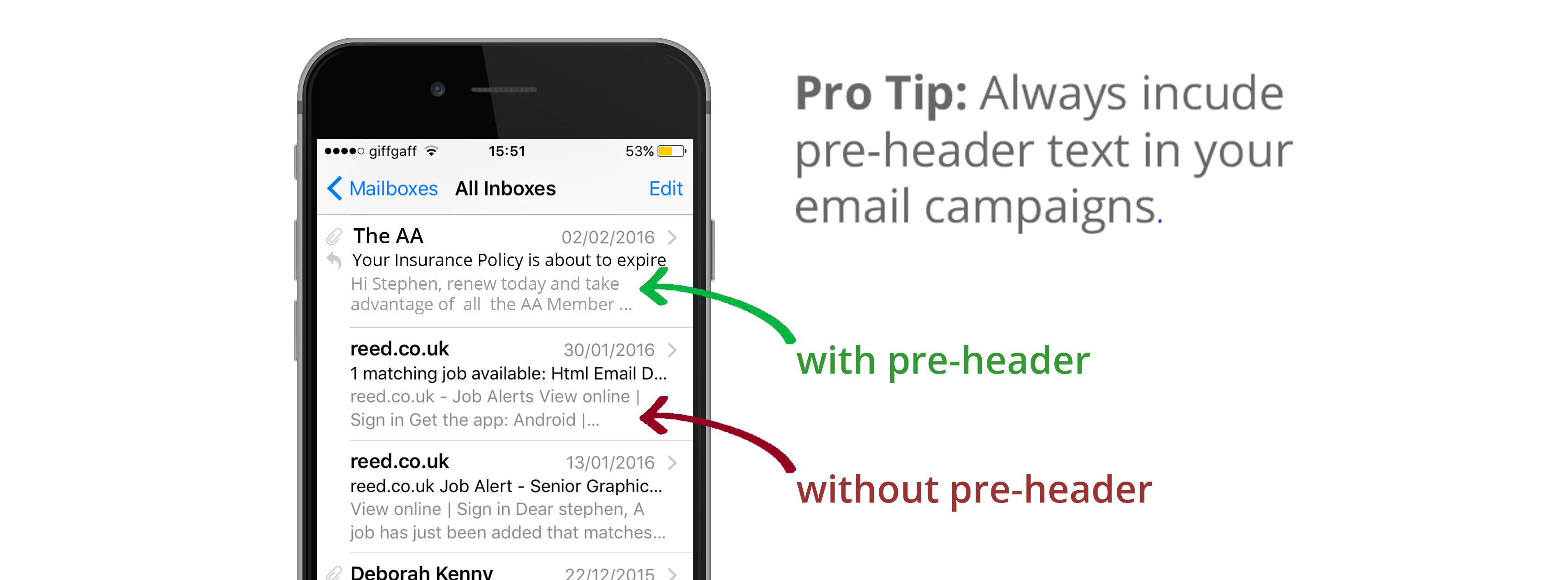
Also, make your content is short. It’s hard to read a long email message on mobile. Mobile users want to quickly check an email message and move on with their activities. They don’t want to spend the next 5 – 15 fifteen minutes reading an email.
Subscribers should be able to consume your content within a few seconds to two minutes.
If your emails are too long, your subscribers won’t read them. And if your subscribers aren’t reading your emails, they may start thinking of unsubscribing.
8. Reward subscribers by offering them discounts and exclusive content
A lot of marketing experts recommend offering discounts to entice web shoppers to buy.
But the kind of discounts I’m talking about here is different. I mean discounts only subscribers enjoy.
Let’s assume that you offer a discount of 10% on your website. Reward subscribers with a 25% discount. That makes them feel more valuable. It means you genuinely appreciate them.
For example, Banana Republic offers 50 – 70% discounts on a time-limited promotion. Their subscribers get the first chance to see it.
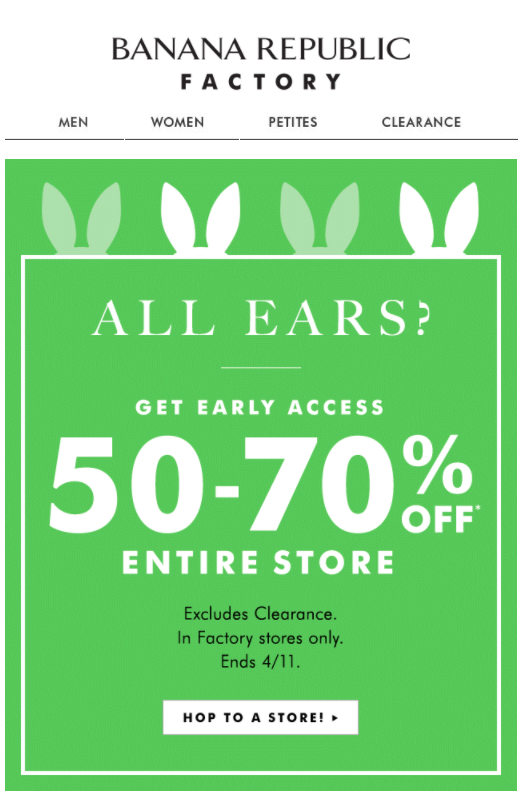
Don’t just stop at discounts.
Offer exclusive content to subscribers. They shouldn’t find this kind of content on your site, social media profiles – anywhere else you maintain a presence.
If you constantly reward your subscribers, they’ll stay loyal to you. They won’t want to miss your email messages.
9. Send different content formats
They are different kinds of content formats.
These are some of the most popular formats:
- Blog posts
- Podcasts
- Case studies
- E-books
- Videos
- Infographics
- Webinars
- Testimonials
Each format has its own fans.
I’m a big fan of blog posts, videos, and podcasts. While I’m not a fan of webinars and e-books, I do know a few people who consume them a lot.
Each subscriber in your email list has 1 – 3 favorite content formats.
It’s okay to send different content formats regularly. That will keep your subscribers engaged.
For example, Jonathan Mead sent a testimonial he received from a reader to subscribers. Subscribers may not be expecting that.
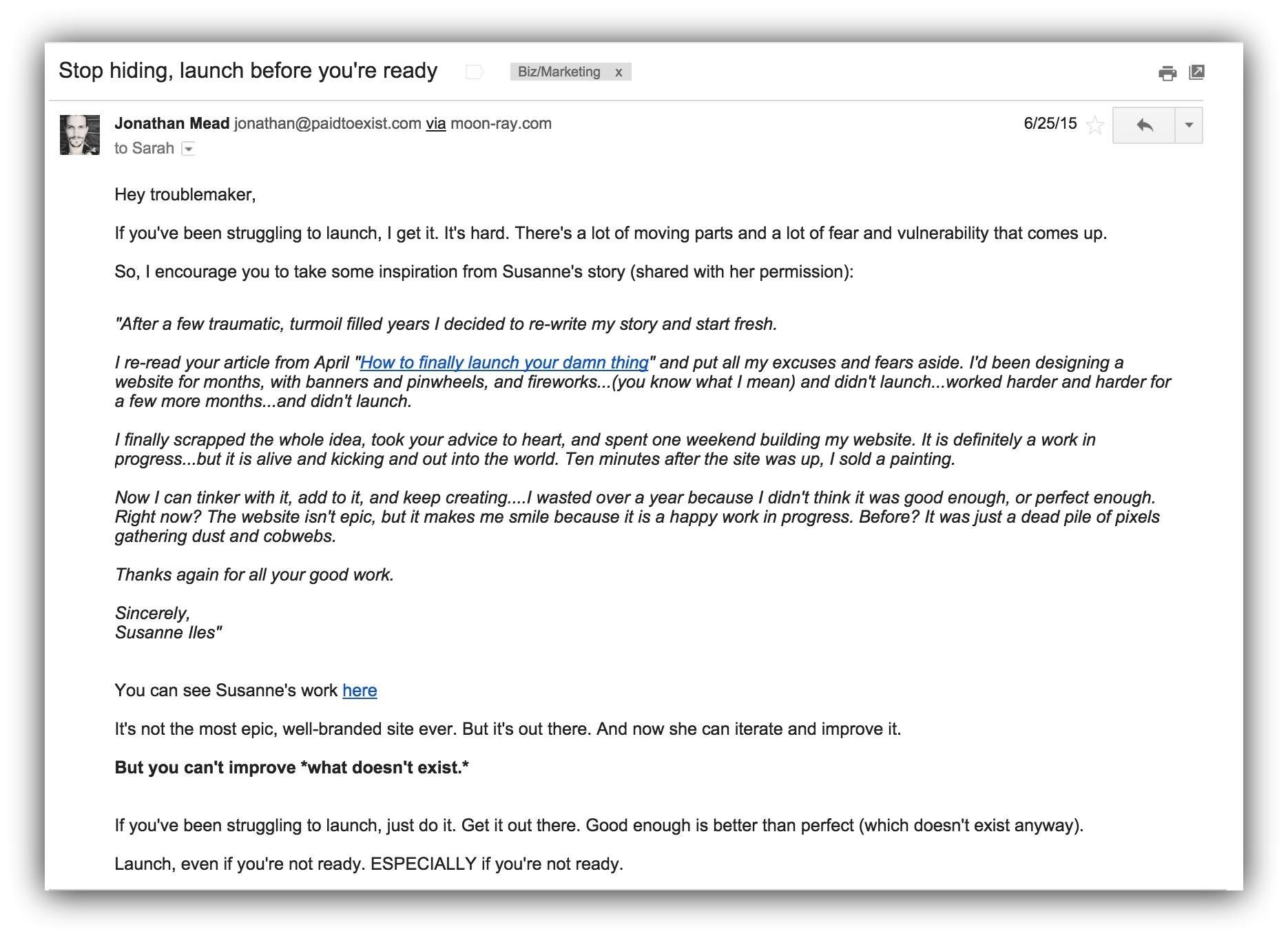
If you sent an interesting case study last week, and I receive a quality video today, I’ll look forward to your next email.
10. Ask for your subscribers’ feedback
Email isn’t meant for broadcasting marketing messages. It’s a communication channel where you expect to send a message and receive a response.
If your subscribers aren’t responding to the messages you send to their emails, then something isn’t right.
It’s time to change your email marketing strategy. Your subscribers should engage with your messages.
A great way to begin is to ask subscribers for their thoughts about some issues, topics, and debate.
The feedback you ask doesn’t always have to be about your business. It could be about something entirely unrelated.
Maybe you just became a dad or mom and want some parenting tips. Ask your subscribers. There’re plenty of parents in your list who have experienced want’s new to you.
Yes, you can ask for feedback related to your business too. Maybe you’re developing a new product and want to know what your subscribers think about the product idea.
Subscribers who took the time to respond to one of your emails would surely find it difficult to unsubscribe. That’s because they know you. They probably trust you over some of your competitors.
11. Don’t ask for the sale often
The reason why you invest in email marketing is that you want more sales. I know that. It’s understandable.
But you shouldn’t ask for the sale each time you message your subscribers. I unsubscribe from a list as soon as I realize that they ask for the sale all the time.
Email providers like Gmail, Yahoo! Mail, and Outlook have smart algorithms that can easily detect if a marketer is too salesy. Once they know that an address is sending too much sales email, they start putting new messages from that address in the spam folder.
Let’s assume you managed to outsmart their algorithms. Your subscribers still wouldn’t be pleased that you ask them to buy something each time they open your email messages.
Unhappy subscribers won’t want to receive emails from you. They’re more likely to unsubscribe.
Instead of asking for the sale all the time, focus on educating, entertaining, and motivating your subscribers. Do that often and ask for the sale a few times.
Let’s say you send 10 email messages, ask subscribers to buy one or two times.
12. Give subscribers what they want
What does a subscriber want from joining your email list?
You should be able to answer this question emphatically. If you can’t, then something is wrong. It means that a lot of your subscribers won’t like what you send them. And if they don’t like what you send them, they will unsubscribe.
Knowing what your subscribers want is vital to building a successful email campaign.
When you give subscribers what they expect, they’ll buy your products and stay in your list for a long time.
13. Avoid controversial issues
I can’t remember how many times I’ve received emails that offended me. I unsubscribed immediately.
There are many ways to be offensive.
The first step is to avoid offending your subscribers is to steer clear of controversial issues.
They’re lots of them. Below are a few:
- Gun control
- Abortion
- Illegal migration
- Vaping E-cigarettes
- Prostitution
Except your business sells products or services in these industries, there’s no reason why you should join the debate.
We often see businesses make the mistake of partaking in debates on these topics on social media. And most often apologized and deleted those posts.
It’s common on email too. What happens on emails don’t get much publicity, but the subscribers may feel hurt.
It doesn’t make business sense to chime in on controversial topics. If your company wants to make a clear public stand on a controversial issue, then you can tell your subscribers about it.
Conclusion
There you have the 13 powerful ways to reduce email unsubscribe rates.
By applying what you’ve learned to your email marketing campaign, I have no doubt that you’ll build a bigger and more engaged email list.
As digital marketers say, “the money is in the list.” If you take good care of your email subscribers, you won’t have to worry about making those sales.
To keep your subscribers happy, the first step is to stop them from leaving. And this article taught you how to do that.
Email marketing is a powerful marketing medium that offers the best return on investment (ROI). Our tool, OmniKick helps you collects emails with ease on your site. It’s easy to set it up. You don’t have to be a web developer.
